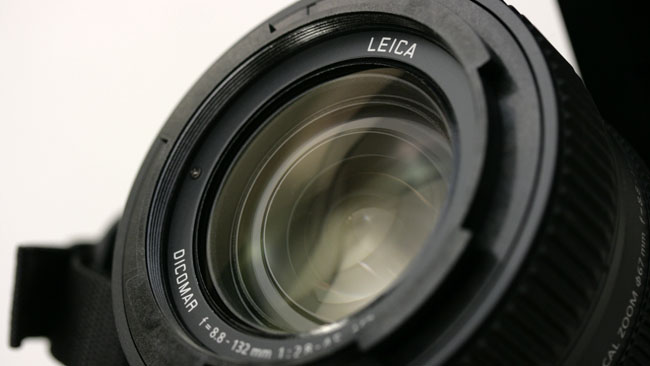
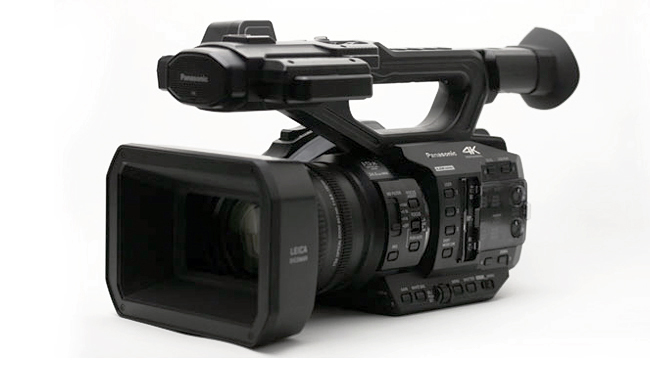 Panasonic AG-UX90
Panasonic AG-UX90
RedShark Review: Exhibited at IBC2016, the Panasonic AG-UX90 sports a larger than average chip for this sort of camera and other features which may make it an attractive option for on-the-go shooters.
Panasonic unveiled its new AG-UX camera series at NAB, with the first working models shown publicly at IBC. It's easy to overlook tools like this, with the most interest being shown in big-chip cinema cameras and pocket-sized action cams, but they're important. In fact, most of the video that's shot in the world is captured on mid-sized portable camcorders, similar to the AG-UX90.The advancement of the field is important to scores of camera people in many different jobs all over the world.
Features and layout
Even though UHD distribution is still in its infancy, most manufacturers seem to be assuming that people prefer to be future proof. The UX90's 4K capability is proudly emblazoned on the side of the case. The UX series uses the same one-inch sensor to provide UHD images, marking a sensible median choice between, on one hand, the engineering challenges of making larger semiconductors and the difficulty of focussing big-chip pictures, and on the other hand, the imaging performance benefits of a larger sensor. Packing more than eight megapixels onto the traditional one-third-inch or half-inch sensor of a portable handycam is possible, but it does involve some undesirable compromises in regards to sensitivity, noise and dynamic range. The fact that a larger one-inch sensor can be produced and used in a reasonably affordable camera such as the UX90 suggests something about the manufacturing processes used to make them and the costs of doing so.
The other thing that a larger sensor does is to make a wide angle of view easier to achieve. Cameras in this part of the market must work harder than ever to differentiate themselves on sheer image quality, so the ergonomics and operability become more important than ever. Creating a wide angle of view on the traditional small chip requires very short focal lengths below 5mm, which in turn require complex retrofocal lens designs. The Leica-branded lens on the UX90 is, in video lens terms, a 15x8.8mm design, which doesn't sound terribly impressive in terms of wideness until we consider the size of the sensor. The combination yields a field of view that the company describes as equivalent to 24.5mm using an awkward comparison to 35mm film. It would be better if people didn't do this; it's an 8.8 to 132mm lens on a one-inch chip. Still, while it isn't absolutely the widest lens ever to hit the streets, it's good for a camera in this class.
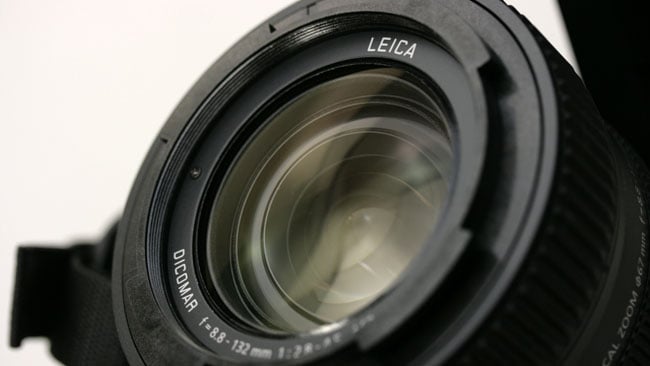 The combination of large sensor and 15x zoom provides a useful wide end.
The combination of large sensor and 15x zoom provides a useful wide end.
It's certainly streets ahead of most of the lenses on small-chip equivalents, although the field of view is cramped down to a bit more than 34mm equivalent in UHD mode, where the sensor is used differently. This is slightly counter-intuitive, as usually we'd expect a higher-resolution mode to use more of the sensor, but it's pretty clear what's going on. The HD modes are using a large area of the sensor and scaling down, while the 4K modes are probably using a 1:1 crop of the centre of it. It would be nice to see a 1:1 crop option in HD for performance similar to a small sensor camera and for longer telephoto shots, but that's really a fairly esoteric desire at this level.
 The UX90 enjoys a comprehensive set of manual controls, including the inbuilt ND filters.
The UX90 enjoys a comprehensive set of manual controls, including the inbuilt ND filters.
The camera has physical push-buttons for quite a few functions, perhaps more so than might be usual at this price point. Many are programmable with a few initially uncommitted. There's a rolling wheel which can control either shutter or gain. The handling characteristics of the lens are much improved by the availability of several settings for the focus ring feel. The default, called 'speed' in the menus, behaves in much the same way as such things have for years, interpreting slow ring rotation as a demand for very gradual focus advancement and faster rotation as a request for snappier pulls.
While this sounds good on paper, it's often a bit awkward for people used to true mechanical zoom lenses. The 'coarse' setting, on the other hand, seems to make things much more direct. It's probably not a good idea to rely on a precise one-to-one relationship between focus ring position and focus distance, but it feels much more positive and connected than the speed-based approach. The 'fine' setting does much the same thing, but feels more like a cinema lens, with longer focus rotation from end-to-end.
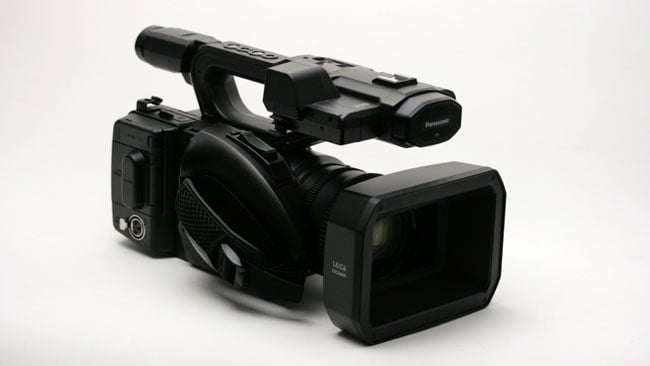 The grip side is less encrusted with controls.
The grip side is less encrusted with controls.
All of this is necessary because the lenses in cameras like this aren't really true parfocal zooms, which maintain focus distance as the focal length is altered. Building a lens which does that requires more pieces of glass and very precise machining; an 8.8 to 132mm f/2.8 to f/4.5 parfocal zoom would cost more than the AG-UX90 and probably weigh more, too. Lightweight lenses like the UX90's are really more like variable primes with electronically-controlled servos to make them behave more like zoom lenses.
This means that there can't be a proper mechanical interlink between the focus and zoom rings and the lens itself, with rotary encoders used to electronically simulate the same thing. This invariably leads to a bit of sloppiness in the response and the degree of this is key to usability. In this regard, the UX90's performance is neither great nor awful, but that more directly-coupled mode in the software makes for a much more usable camera.
Recordings are made to SDXC media in a variety of file types and codecs. There are two slots with a variety of sequential and simultaneous recording modes. SD cards are affordable and the 100-megabit codec used for UHD work is undemanding. The pictures themselves suffer from a degree of rolling-shutter wobble which makes the camera difficult to recommend for really violent, action-sports sort of work, but is unlikely to upset anyone else. The optical image stabiliser seems to stabilise nicely without introducing excessive sloppiness. There are even menu settings for it.
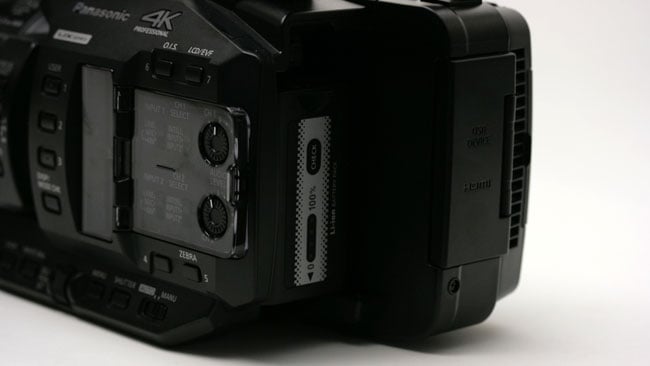 Panasonic's 43 watt-hour batteries are well-matched to the 12-watt power consumption.
Panasonic's 43 watt-hour batteries are well-matched to the 12-watt power consumption.
Panasonic AG-UX90 versus UX180
The UX90 is the cut-down member of the range and, as such, lacks SDI and timecode connectivity, the dual-codec recording modes and a few other things (it does retain XLR audio inputs and proper audio controls). One omission is that the UX90 is not switchable between 50Hz and 60Hz video modes; it is not a world camera, whereas, going by the spec sheet, the 180 is. Other than that, the omissions are unlikely to discourage users in the news, documentary and corporate spheres. The viewfinder at the back is a bit small and one might wish for a slightly more generous bitrate – 100 megabit UHD is the equivalent per-pixel bandwidth as recording HD at 25 megabits – but there are some economies of scale with 4K-ish recordings and the convenience factor is high.
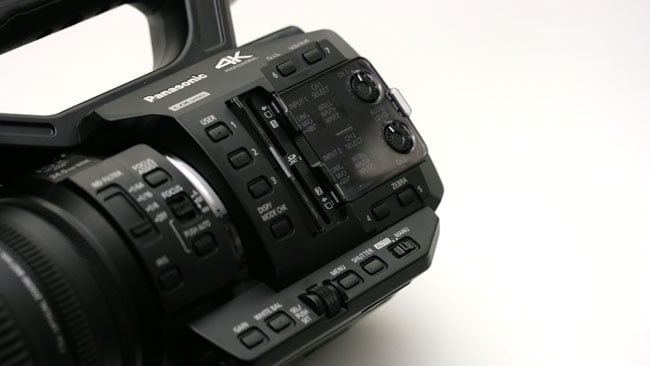 Although the UX90 lacks the UX180's SDI outputs, full audio controls are retained.
Although the UX90 lacks the UX180's SDI outputs, full audio controls are retained.
Ultimately, it's a largely conventional lightweight news or documentary camera in a market where 4K is increasingly demanded for every type of production. The wide field of view and that nice focus coupling mode make it a solid choice for highly mobile situations. Between the UX180 and the UX90, the longer 20x lens of the UX180 might be the main deciding factor.
Street price of the AG-UX90: US$ 2095, £2329.
Tags: Production


Comments